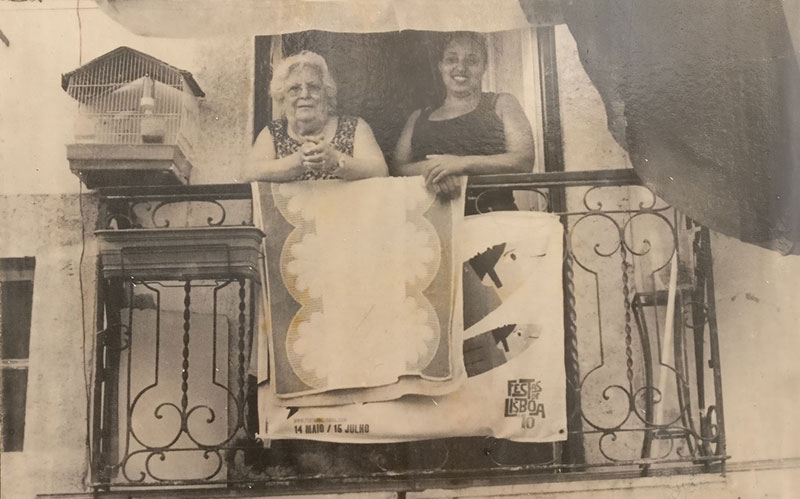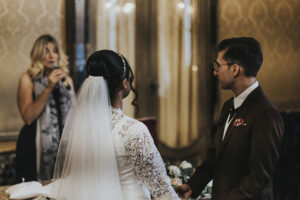In my experience as a humanist celebrant, I dedicate great attention to finding the right words to narrate the life story of those who entrust me with the task of recounting a significant moment in their existence. Whether it’s a new life entering a family, a love that wants to be celebrated in the moment of marriage, or a renewal of vows, my commitment is always immense to honor the lives of the protagonists. When it comes to a farewell or a secular funeral, the choice of the right words becomes even more crucial because I am called upon to honor an entire lifetime. I feel the immense responsibility of this task.
Every life is a masterpiece
I like to think that every life, every biography, constitutes in itself a complete painting, a unique and perfect masterpiece, even if, at times, it doesn’t meet our expectations and our concept of completeness. Not all canvases have recognizable contours and images: if we compare a portrait by Francisco Goya, precise and defined in every detail, to one by Pablo Picasso or even Francis Bacon, where the randomness of faces is combined with a confused and sometimes incomplete stroke, after an initial moment of bewilderment, we adjust our gaze and perceive each work as finished and perfect.
Every life story is unique and special
Certainly, each artist’s style is different, but aren’t our lives and stories different too? Yet, even a broken line contributes to the sense of the artwork; in fact, it lends uniqueness and individuality. Just like the journey that makes us protagonists of our unique and completed lives.
Making memories visible during a secular funeral
And it is precisely this journey, in its singularity and beauty, that I am called upon to narrate and make visible in my role as a humanist celebrant. Especially in the most painful moment, that of farewell, or secular funeral, where the outlines of the past blur and become difficult to grasp, due to tears clouding the view and grief robbing clarity.
My role as a humanist lay celebrant in a secular funeral
My role as a humanist lay celebrant is to sit beside those who have lost a loved one, take their hand, and accompany them on the journey of memory, with sensitivity and empathy. Sometimes I remain silent and respectfully listen to everything that flows freely and cathartically in the memories of relatives and friends. Sometimes, if necessary, I am the one asking questions, trying to grasp and sew together the thread of the deceased’s life, to know it and dignify it during the ceremony of the secular funeral.
An imaginary thread between past and present
Often, the life story of the departed pours out like a flood, carrying with it snippets of life, memories, stories, significant and moving episodes, funny anecdotes, sometimes bizarre; it is my responsibility to welcome and gather them, hanging them on an imaginary thread stretched between past and present, like colorful notes in the wind, drying and fixing their contents. These are the memories that become milestones in the journey into the memory and life story of the ones we celebrate.
Elena’s secular funeral
On one occasion, this imaginary thread took tangible form, and I want to share a detail from a ceremony I conducted a few months ago, during the secular funeral of Elena. The Ad Memoriam ceremony for Elena took place outdoors, in the countryside, in the garden where Elena, a beloved mother and grandmother, had retreated to live after retiring.
A symbolic ritual to involve children too
To engage even the youngest members of the family, I suggested to Elena’s daughters to prepare colorful cards together with them on the day before the ceremony. Each of them could draw, attach a photo, write a word, or a greeting dedicated to Elena on these cards. All the notes were then hung with colorful wooden clips on a line stretched between two trees.
A moment of touching sharing
Thanks to a beautiful sunny autumn day, the secular funeral took place in an atmosphere of great serenity and lightness, giving the attendees teary eyes but also many smiles and happy memories. At the moment of the final farewell, to the tune of Daniele Silvestri’s “Salirò,” a song Elena often danced to with her granddaughters, a gust of wind scattered the cards, and one of them flew into the air: it was the work of the youngest granddaughter, who had drawn a white dove with fluffy wings like clouds.
Telling to live on in the hearts of those who remain
At that moment, I couldn’t help but think of the words of the great poet Alda Merini: “I never thought these pages would become wings.” Yet, it happened, like every story that doesn’t remain silent but slips into oblivion, gaining voice, body, and sometimes wings to continue living in the hearts and memories of those who remain. I do my best to celebrate the life story of your loved ones and making it happen brings me great joy: that’s precisely why I wanted to become a humanist lay celebrant.
Would you like to know more about how to organize a commemoration ceremony?
Have you ever thought about dedicating a special moment to someone who left a special mark in your life? Would you like to commemorate the memory of someone you loved? If you do but are unsure how to proceed, please write to me. Together, we can find the most suitable way to honor their memory and create a commemoration ceremony that tells their life story and celebrates their special moments.
Because no one truly dies as long as they live on in the memories of their loved ones.




